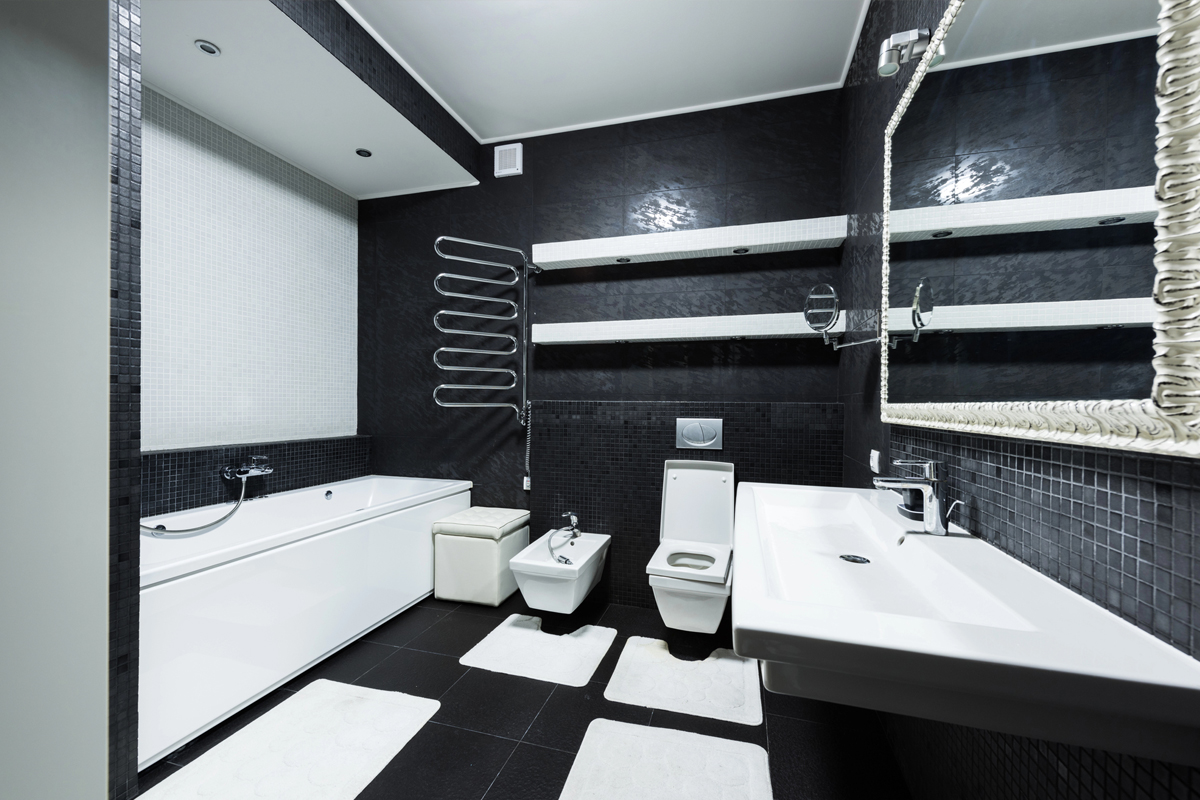The bathroom is a place to relax and recharge after a long day. Modern trends in bathroom design aim to combine aesthetics, comfort, and functionality, creating an atmosphere that helps you unwind from the daily hustle. Let’s explore the main directions.
Natural Motifs and Eco-friendliness
The use of natural motifs and eco-friendly materials is a leading trend in today’s bathroom design. Emphasizing the natural beauty of materials contributes to a calm and harmonious atmosphere.
Natural Materials and Textures
In modern bathrooms, natural materials such as wood, stone, and marble are often used. Wood with a waterproof coating adds warmth, while natural stone like slate or granite brings durability. The textures of these materials can range from smooth to rough, creating an interesting visual effect.
Eco-design and Sustainability
More people are choosing eco-friendly materials and energy-efficient solutions. Natural component-based tiles and paints are used for wall finishes, while energy-saving lamps are popular for lighting. Water-saving faucets and shower systems that help reduce water consumption are also becoming popular.
Live Plants and Greenery
Greenery and live plants in the bathroom are another popular trend. Plants add freshness and help maintain optimal humidity levels. Plants that thrive in humidity, such as ferns, aloe, and bamboo, do especially well in bathrooms.
Minimalism and Clean Forms
Minimalism encourages the elimination of everything unnecessary, leaving only the essential elements. Simplicity and functionality play the main role, with all lines and shapes emphasizing the design’s strictness and cleanliness.
Monochrome Palettes and Simple Lines
Monochrome color schemes and neutral shades like white, gray, beige, and black characterize minimalist design. Simple lines and clean forms create a sense of order and harmony, making the space visually more spacious. The lack of excess and the focus on clean lines give a feeling of lightness and airiness.
Hidden Storage and Compact Solutions
Minimalism requires the space to be free of unnecessary details, so special attention is given to storage systems. Built-in cabinets and shelves with closed fronts help hide all necessary items, maintaining order. It’s important to choose furniture and accessories with simple designs, without decorative elements.
Hanging Elements and “Floating” Design
Hanging sinks and cabinets have become popular elements of the minimalist style. They create the illusion of “floating” elements, adding lightness to the interior. Additionally, this design makes cleaning easier, as dust and dirt don’t accumulate under the cabinets and sink.
Bold Accents and Color Elements
Although minimalism and natural motifs remain key trends, many designers still suggest adding vibrant accents to create interesting contrasts and enliven the space.
Accent Walls and Bold Tiles
Bold tiles or mosaics with unusual patterns and textures can become focal points. Patterns that mimic geometric shapes or tiles with a 3D effect, adding depth, are popular. An accent wall with such elements draws attention and makes the bathroom livelier.
Metallic Accents
Gold, bronze, or copper faucets and handles add elegance to the bathroom interior. They pair well with monochrome and natural palettes. Metallic accents can also be repeated in lighting and mirror frames, creating a cohesive look.
Colored Accessories and Textiles
Bright towels, rugs, soap dishes, or even plants in colorful pots can make great accents that are easy to replace if you want to refresh the interior. This is convenient for those who like to experiment with color but don’t want permanent changes.
Modern bathroom design offers many options to create a stylish and cozy space and add a corner of comfort and relaxation to your home.


